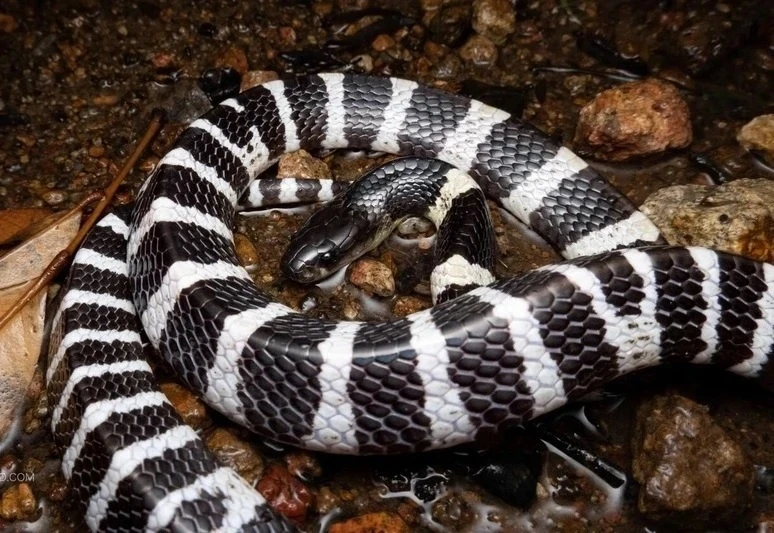On 20/8, hospital representatives reported the incident, which occurred two weeks prior. Neighbors heard the child crying and spotted a black and white striped snake, suspected to be a many-banded krait, slithering near her. At the time, the family checked but couldn't find a clear bite mark.
Three hours later, the girl began exhibiting symptoms like drowsiness and difficulty breathing. Her family rushed her to Binh Lieu Medical Center, from where she was transferred to Quang Ninh Obstetrics and Children's Hospital for further treatment.
Upon arrival, the child was in a deep coma with dilated pupils, severe respiratory distress, and cyanosis. Doctors discovered a tiny puncture wound on her left big toe and blood tests revealed hyponatremia (low sodium levels).
Suspecting a many-banded krait bite, which carries a high mortality rate, the medical team immediately intubated the child, administered anti-edema medication, and provided intensive care. She has now recovered, is playful and alert, and has been discharged.
Doctor An Hoang Yen, from the Intensive Care Unit, explained that the many-banded krait is a common venomous snake in Vietnam. Its bite often leaves only two tiny, needle-like puncture wounds, making diagnosis challenging. The venom causes paralysis, rapid respiratory failure, and maximal pupil dilation. In young children, like this patient, if not detected and treated promptly, the bite is often fatal.
 |
Illustration of a many-banded krait. Photo: Hongkongsnakeid |
Illustration of a many-banded krait. Photo: Hongkongsnakeid
Experts advise people to avoid damp, dark areas with dense vegetation or near water sources—common snake habitats. When traversing such areas, wear protective gear like long pants and boots, and use a walking stick. Never provoke a snake, as they may attack if they feel threatened.
As a preventative measure, families should regularly clean their homes and gardens, removing debris and overgrown vegetation that could shelter snakes. When working outdoors, especially at night, carefully observe the surroundings and use a light.
In case of a snake bite, victims should remain calm, apply a wide bandage to the wound, immobilize the bitten limb, and immediately seek medical attention. Experts strongly advise against using folk remedies, self-treating, or attempting to capture or kill the snake.
Thuy Quynh












